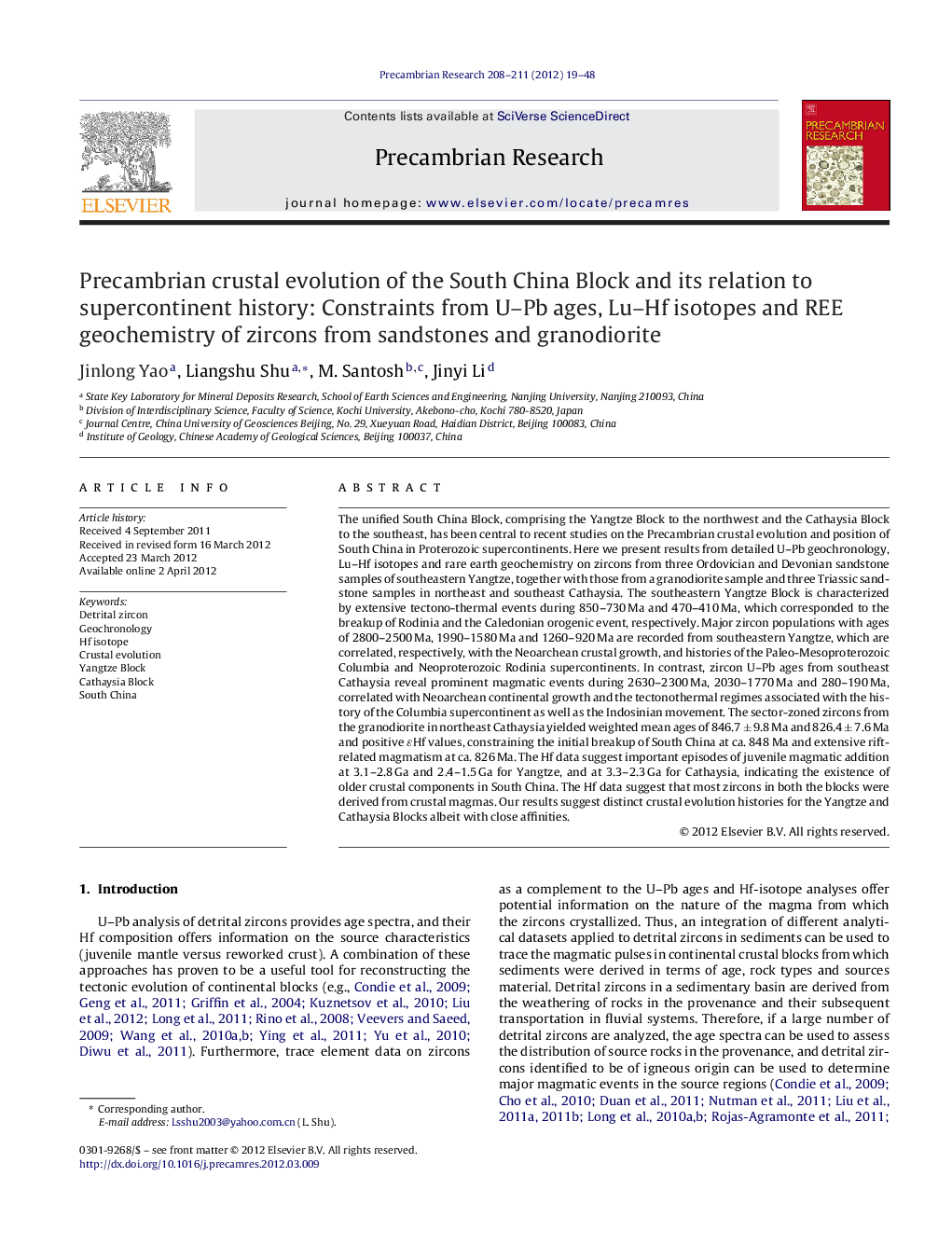| Article ID | Journal | Published Year | Pages | File Type |
|---|---|---|---|---|
| 4723513 | Precambrian Research | 2012 | 30 Pages |
The unified South China Block, comprising the Yangtze Block to the northwest and the Cathaysia Block to the southeast, has been central to recent studies on the Precambrian crustal evolution and position of South China in Proterozoic supercontinents. Here we present results from detailed U–Pb geochronology, Lu–Hf isotopes and rare earth geochemistry on zircons from three Ordovician and Devonian sandstone samples of southeastern Yangtze, together with those from a granodiorite sample and three Triassic sandstone samples in northeast and southeast Cathaysia. The southeastern Yangtze Block is characterized by extensive tectono-thermal events during 850–730 Ma and 470–410 Ma, which corresponded to the breakup of Rodinia and the Caledonian orogenic event, respectively. Major zircon populations with ages of 2800–2500 Ma, 1990–1580 Ma and 1260–920 Ma are recorded from southeastern Yangtze, which are correlated, respectively, with the Neoarchean crustal growth, and histories of the Paleo-Mesoproterozoic Columbia and Neoproterozoic Rodinia supercontinents. In contrast, zircon U–Pb ages from southeast Cathaysia reveal prominent magmatic events during 2630–2300 Ma, 2030–1770 Ma and 280–190 Ma, correlated with Neoarchean continental growth and the tectonothermal regimes associated with the history of the Columbia supercontinent as well as the Indosinian movement. The sector-zoned zircons from the granodiorite in northeast Cathaysia yielded weighted mean ages of 846.7 ± 9.8 Ma and 826.4 ± 7.6 Ma and positive ɛHf values, constraining the initial breakup of South China at ca. 848 Ma and extensive rift-related magmatism at ca. 826 Ma. The Hf data suggest important episodes of juvenile magmatic addition at 3.1–2.8 Ga and 2.4–1.5 Ga for Yangtze, and at 3.3–2.3 Ga for Cathaysia, indicating the existence of older crustal components in South China. The Hf data suggest that most zircons in both the blocks were derived from crustal magmas. Our results suggest distinct crustal evolution histories for the Yangtze and Cathaysia Blocks albeit with close affinities.
Graphical abstractFigure optionsDownload full-size imageDownload as PowerPoint slideHighlights► U–Pb age, Hf isotopes and REE of zircons from Yangtze and Cathaysia are presented. ► Yangtze and Cathaysia were likely irrelevant parts of the Columbia supercontinent. ► Magmatism related to Rodinia is prominent in SE Yangtze and NE Cathaysia. ► Magmatism related to Rodinia is insignificant in SE Cathaysia. ► Late Paleozoic Northwestward expansion of Cathaysia is suggested.
